Summing up 10 Years of Rubimed
Introduction
Ten years ago, I first introduced the method in a lecture entitled “Die psychoenergetische Tiefenstruktur und ihre Therapie – ein neues energetisches Modell” [Psychoenergetic Deep Structure and its Therapy – a New energetic Model].2 The lecture described an alternative-medicine procedure I had developed, in which one first measures the charge of the four subtle energy levels (the Aura) with a testing device, and then uses specific test ampoules to find out why someone has so little energy. Most of the time, emotional conflicts turn out to be the most significant energy thieves, and they can in fact be found in virtually every patient. The amazing thing about this is that psychosomatic medicine has been saying this for a long time, but it wasn’t able to be proven – until now: Psychosomatic Energetics™ (PSE) is able to track down conflicts and ascertain their content. If one then heals these emotional conflicts, many purely physical illnesses will also improve, making it a genuine holistic therapist.
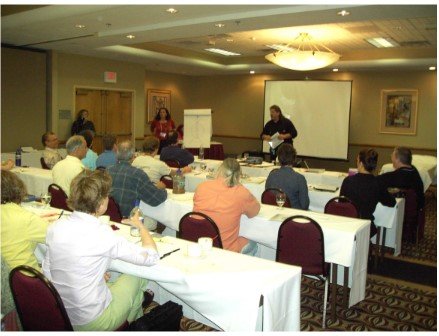
In a surprisingly short time, Psychosomatic Energetics has developed into a standard method in alternative medicine. This is especially true of the German speaking countries, but also applies increasingly to North America. More than 2000 therapists occasionally or regularly use this method, of which presently about 300 are “Certified Energy Therapists”. These latter are therapists who are specially trained in the use of the method, i.e. who have taken intensive theoretical and practical instruction and passed a qualifying final in the use of the method, i.e. who have taken intensive theoretical and practical instruction and passed a qualifying final examination.
A mandatory part of the course is for each attendee to undergo therapy – because we quickly found out that a therapist’s own energy blocks can considerably limit his or her testing ability. For instance, therapists who themselves have large conflicts tend to see them in their patients either too often or, on the contrary, too seldom. In addition, testing one’s own energy disturbances is far too imprecise, whereas self-therapy along with intensive training can achieve reliable results.
Scientific Verification of Energy Testing
Because of its importance, I’d like to go into the topic of reliability in greater detail. Energy tests such as kinesiology, electroacupuncture etc. (test procedures used in Psychosomatic Energetics™) are known to be scientifically controversial. To my mind, the procedure itself is not the insurmountable obstacle to verifying such procedures, but rather the overwhelming destabilization of the tester during the verification process itself. The tester is usually quite unaware of having been placed in a generalized “climate of doubt and suspicion” – which, experience has shown, includes above all the negative stress milieu of double-blind studies. I have taken part in a number of such– which sadly all turned out negatively – and at the time I didn’t (yet) notice my subliminal tension. But eventually I became aware of it, thanks mainly to a heightened sensitivity resulting from my own self therapy with Psychosomatic Energetics™. I now understand what pitfalls are associated with these kinds of studies, which is why I now object to them.
Although this kind of testing fails when placed in the context of a double-blind study, it functions smoothly and effectively in daily practice. For example, different PSE testers working under normal clinical conditions usually arrive at the same results. Yet another criterion of quality derives from when PSE testing uncovers some hitherto undetected condition that can be objectively verified after the fact using standard accepted methods. Moreover, the quality of Psychosomatic Energetics can of course be seen in the fact that patients almost always confirm the correctness of the test results (i.e. the conflict contents agree with their self-perception, the energy readings match up with how they feel, etc.).
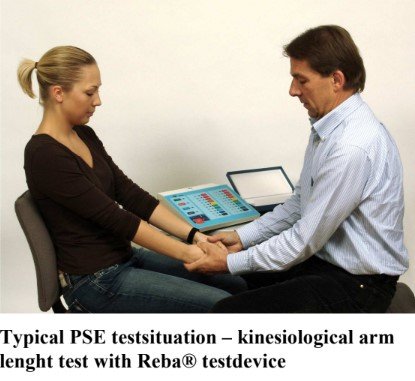
In short, one sees that Psychosomatic Energetics really does work in daily practice. Now of course one could simply make this observation and let it go at that, since, when it comes to the practical application of medicine, the only thing that counts is success. In other words, one could declare that it should make no difference whether or not a procedure is scientifically accepted, as long as it works and achieves good results.
Research
However, the reality is that there’s no getting around some degree of scientific verification if the goal is to rationally evaluate a procedure. The most elegant way to do this is to allow therapists to work undisturbed and then afterwards look at what they have accomplished. These so-called clinical studies have the benefit of avoiding negatively stressing therapists while still yielding usable results. There are now two large-scale clinical studies of Psychosomatic Energetics™ that (happily) arrived at very nearly the same results: 80% vs. 85% success rate. They were carried out independently of each other in two general-practice clinics, and they summarize the 1 to 1½ year treatment results of 200–300 patients – i.e. a relatively large patient population, which means a high confidence level in the results.
Both studies show that Psychosomatic Energetics™ is highly effective for the usual general-medicine clinical pictures. The study with the longer treatment duration (performed by Dr. Birgitt Holschuh-Lorang) had a higher success rate (85%) compared to 80% in the first study (Drs. Banis). In addition, Dr. Holschuh Lorang’s study showed that the success rate was markedly higher among younger patients, rising to 90% for children and teens (and falling to 70% for seniors). It is thus a good idea to start PSE treatment as early in life as possible, because the regulatory system responds better at that time.
Both clinical studies clearly show that, for the usual clinical pictures of a general practice, a good to satisfactory result can be achieved with PSE – provided that at least two (better: three) large conflicts are able to be dissolved. Experience has shown that this takes approximately 8–15 months. Compared to other psychotherapeutic and naturopathic procedures, this would seem to be acceptable, especially considering that the therapeutic results are usually long lasting. It should also be particularly emphasized that the client base of PSE patients has always tended to consist of the chronically ill (with numerous rounds of therapy behind them) whose prognosis can be classified as rather unfavorable. In view of such a high percentage of problem cases, the achieved results are empirically doubly significant. Dr. Holschuh-Lorang sums it up thus: “The years now of follow-up checks of many of our patients – following a satisfactory course of basic treatment – who come in at half-yearly and yearly intervals for an energy check and exhibit amazingly good energy readings, shows that this method does not just provide merely transitory symptomatic relief, but rather stable healing successes.”

Yet another clinical study (Project Schmetterlinge [Butterflies]) was initiated in Austria by the retired school headmistress and kinesiologist Gerlinde Paukert. She investigated whether preventive PSE treatment might have a positive influence on the kids’ academic performance and overall behavior. Her thinking here was that an improved energy system and conflict resolution should be a good prophylactic measure that would help children learn better and with more enjoyment. She selected a grade-school class (6–7 years old), a middle-school class (10–11 years old) and a high-school class (19–20 years old). With the permission of the school administration, teachers and parents, all students were tested with the REBA® Test Device and
then supplied with the appropriate drops. Even though participation was voluntary, all the students took part. Since the project was being sponsored by the International Society for Psychosomatic Energetics, and managed by Ms. Paukert in an honorary capacity, there was no cost to the students or parents. Ms. Paukert wrote: “The energy situation of all children and teens improved, rising from 7% to 25%. The observable effects are physical as well as intellectual and emotional. Concentration, health and mood are all noticeably improved, the classroom atmosphere is better, and more cooperation and teamwork in class means they feel better in the school environment.”
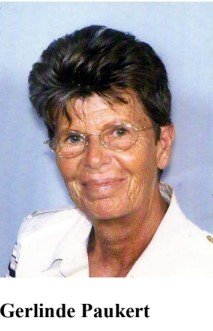
Summing up, I can confirm that it would be a good idea to examine every first grader for geopathic stress and psychoenergetic conflicts – before they lead to a possibly negative school experience. In this manner, one could very inexpensively, painlessly and effectively do a lot of good by helping prevent poor scholastic careers later on, as well as sparing the concomitant high social costs.
Another small-scale study was carried out by the internist Dr. Wolf Hemsing. He examined and treated children and teens with behavioral disorders in a foster care home in Jupident in the Austrian Vorarlberg. These kids come from families in which the parents’ psychosocial situation rendered them completely unable to cope with raising their behaviorally-disturbed children. The kids are not physically handicapped, but their attendant reports that they all have a low IQ. In all, over 12 months in 2004–2005, 10 children aged 9–14 were treated with the methods of Psychosomatic Energetics™ and the corresponding Chavita® and Emvita® remedies. These homeopathic remedies were dispensed by the attendants during times that the children were at Jupident: on weekends and during school holidays, when the children were with their parents, there was no treatment.
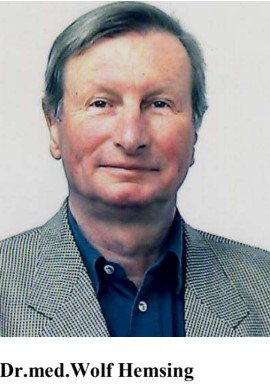
In his summary, Dr. Hemsing writes: “Children from 9–14 years of age, from psychosocially problematical backgrounds, primarily learning and performance disorders (behavioral problems also, to some extent), when examined with Psychosomatic Energetics™ (Banis), exhibit overall low energy readings in every respect. Energy deficit not able to be remedied during observational period of 12 months under therapy with Chavita® and Emvita®. Striking improvement after cleaning up sleeping location (Geovita®). In all, according to attendant’s evaluation, noticeable to considerable improvement in learning, performance and behavioral criteria.
Improvements:
- Teenager fully into puberty, now better adjusted, humorous, well motivated and more accessible
- Exhibits noticeably more self-confidence, calmness and composure, especially in demanding situations
- Shows more responsibility (regarding schoolwork); concentration and perseverance are considerably higher
- Less vindictive behavior
- More trusting and accessible
- Markedly fewer migraine attacks
- Less daydreaming
- Acts more like she really is; always wanted to fit in and be reasonable; comes out of her shell more; is better at asserting herself
In closing, I’d like to say on the topic of studies that the Butterfly study and a large-scale clinical study were both, happily, continued de-centrally (i.e. at many different participating practices). This raises the expectation that the efficacy of Psychosomatic Energetics™ will in future be even more validated on the basis of larger numbers of cases. As we know, over the long run only those methods survive which can demonstrate their efficacy not only in the individual case, but also – and above all – for larger patient numbers in a conclusive and verifiable manner.
Psychosomatic Energetics™ Survey
The following survey was originally commissioned as part of the manufacturing firm Rubimed’s Quality Control (QC) program. Because the REBA® Test Device is of course central to Psychosomatic Energetics™, the manner in which it is used on a daily basis is basically synonymous with working in Psychosomatic Energetics™ itself. Therefore, when the manufacturing firm surveys satisfaction with the device, the results also provide information concerning satisfaction with the method. 211 therapists returned the questionnaire, the results of which are summarized below:
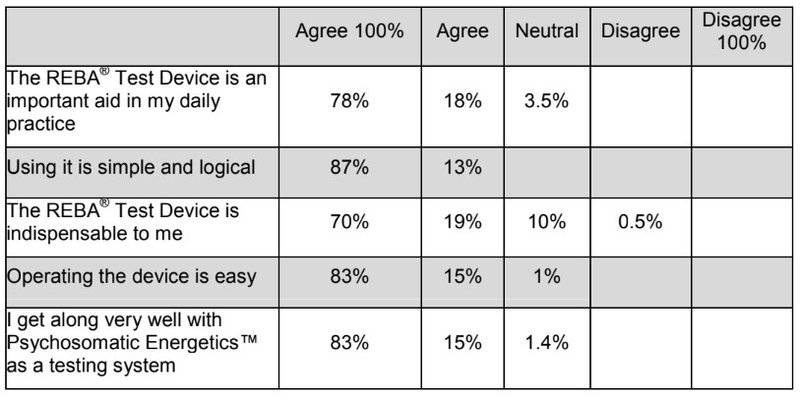
Individual comments (for which purpose there was a text field below the survey questions) were particularly interesting. I’d like to single out a few of these comments:
“Ever since my training in the field of Psychosomatic Energetics™, my sphere of activity has broadened and deepened enormously. This procedure has gone on to become the most important therapeutic procedure in my practice, since with it I can determine the causes of blocks and conflicts, and treat them, in a minimum of time! We thank the inventors! The REBA® Test Device has proven to be ideal for diagnostics and therapy at all levels.”
“I work in the Department of Psychiatric Services at B. University, and for an addiction clinic in K. For me, the device is indispensable; its success motivates me.”
“It’s a great therapeutic procedure. Thanks for this invention!”
“Many thanks for this wonderful method!!!”
“I am enthused, and I work a lot with PSE.”
“Without this device, nothing works anymore!”
“Since I began working with PSE 2 years ago, I have 4–6 clients daily for PSE in my practice (from all over Switzerland). Many of them are not ill, but would just like to grow spiritually. In disease cases, sensational successes are possible. My most heartfelt thanks to Dr. Banis for his fantastic method.”
“Now, 95% of my clients/patients come in for PSE!!”
I’ve been a practicing naturopath for 14 years and have learned “countless methods” – but the most brilliant method is PSE. I can no longer imagine working without this method!
Ongoing Development of the Method
Psychosomatic Energetics™ has been refined considerably since its initial introduction. This includes Dr. Ulrike Banis’ positive-thinking statements for each of the 28 conflicts, whereby the negative vacuum of the conflict contents can be filled out with positive suggestions. Another milestone was the discovery of the Central Conflict and the four character types (see the Manual of Psychosomatic Energetics™ for more detailed information). With this, a sound program was able to be developed, one which unifies Hippocrates’ ancient theory of temperaments with Fritz Riemann’s four character types. Moreover, each of the character types could be related to a specific energy center (Chakra), so that the possibility existed, for the first time, of testing people’s personalities energetically.
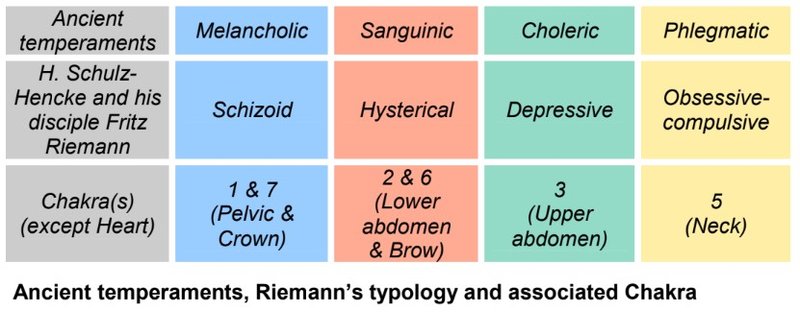
The four character types have proven to be an extraordinarily useful counseling tool in daily practice – whether learning about one’s dark side or analyzing one’s relationships with other people. The concept has also proven itself in career, marriage and child counseling. Moreover, there are many indications that the origin of the Central Conflict can be traced back to prior incarnations (more information can be found in New Life Through Energy Healing). With this thesis, Psychosomatic Energetics™ has acquired a much greater depth that extends far into depth psychology and transpersonal psychology. In fact, one can speak with some justification in terms of spiritual counseling, which has become possible by means of this method (for more details, see Spiritual Energy Medicine).
Comparison with Other Methods
Additional interesting approaches have resulted from comparisons or parallel applications with other methods. For instance, in a small-scale investigation involving Yoga students, it turned out that by no means everybody benefits from these exercises, but rather (amazingly) only every third person. A second third checked out neutral, while the final third was actually the worse for the experience. One can see from this that it might make sense, before embarking on a long-term application of some procedures, to first select for those participants who are most likely to benefit therefrom. Similar investigations – such as those of the internist Dr. Klaus (of Thun, Switzerland) with Core Dynamics – have shown that PSE is evidently a good instrument for checking out the individual efficacy of specific healing methods.
Various therapists have had good results with the parallel application of hypnosis and PSE. Evidently, the clear PSE test results aid in quickly “getting to the point” down in the dark subconscious. Psychotherapists have related similar findings to me, reporting on the one hand that, with PSE, patients more easily open up emotionally and, on the other, that psychotherapy much more rapidly arrives at and talks about the truly essential themes. In the parallel application of kinesiology, EMDR or percussive pressure, it has been shown that, even though these procedures cannot permanently dissolve conflicts energetically, they nevertheless have an immediate beneficial effect which combines very well with PSE’s long-term effectiveness.
Outlook
The experiences of the past few years have shown that the essential content of Psychosomatic Energetics™ has proven to be stable. In my opinion, this is because the method is based on firm scientific foundations which, logically enough, are subject to very little change. Even the practical application of PSE exhibits great stability now, so that the currently taught testing scheme has proven to be very effective and practicable. Aside from the solid methodological core, there are of course many peripheral areas that vary more or less constantly in response to daily experiences with patients, studies, and intense reflection; these developments can be read about in the Psychosomatic Energetics™ readers (currently 3 volumes, published on a yearly basis). In addition, there are a number of user’s study groups, plus the continuing education for certified energy therapists in the form of yearly expert reunions, and a half-day lecture conference at the annual Medizinische Woche [Medical Week] in Baden-Baden.
Bibliography
Banis, Reimar: Durch Energieheilung zu neuem Leben [New Life through Energy Healing] Via Nova Petersberg 2002
Banis, Reimar: Spirituelle Energiemedizin [Spiritual Energy Medicine]
Via Nova Petersberg 2007
Banis, Reimar: Lehrbuch der Psychosomatischen Energetik [Manual of Psychosomatic Energetics™]
VAK Vlg. Kirchzarten 2003
Banis, Reimar (Editor): Lesebuch der Psychosomatische Energetik [A Psychosomatic Energetics™ Reader] Vol. 1, Comed Verlag Hochheim 2004
Banis, Reimar (Editor): Lesebuch der Psychosomatische Energetik [A Psychosomatic Energetics™ Reader] Vol. 2, Comed Verlag Hochheim 2006
Banis, Reimar (Editor): Lesebuch der Psychosomatische Energetik [A Psychosomatic Energetics™ Reader] Vol. 3, Comed Verlag Hochheim 2007
Banis, Ulrike: Erdstrahlen & Co. – Das Grundlagenbuch über Geopathie [Geopathic Stress & Co. – Fundamentals of Geopathy] Haug Heidelberg 2004
Banis, Ulrike: Handbuch der Psychosomatischen Energetik [Manual of Psychosomatic Energetics™]
2nd revised and expanded edition, Comed Verlag Hochheim 2005